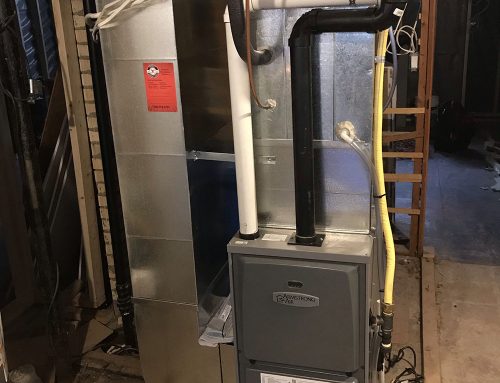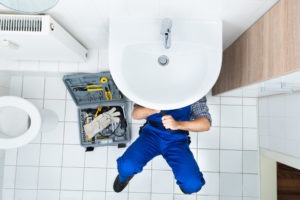The publisher is making a number of great observations on the subject of 10 Common Rental Property Repairs in general in this post down the page.

Managing plumbing concerns in rental residential or commercial properties effectively is crucial for preserving lessee fulfillment and preserving the property's worth. Whether you're a landlord or a home supervisor, recognizing how to deal with these typical troubles can conserve you money and time while ensuring compliance with legal responsibilities. Right here's a step-by-step guide on exactly how to manage pipes concerns in rental properties.
Establish Clear Communication
Urge lessees to report any kind of pipes concerns as quickly as they take place. Provide multiple communication channels such as phone, email, or a tenant portal to make it easy for them to reach out. Prompt reactions to these reports can avoid minor issues from escalating into significant troubles.
Enlighten Lessees
Inform your tenants about what makes up a pipes emergency and what does not. Give guidelines on just how to take care of small concerns themselves, such as utilizing a plunger to unblock a bathroom. Likewise, inform them about what they should stay clear of taking down drains to prevent clogs, such as oil, coffee premises, and non-biodegradable products.
Regular Upkeep
Apply a regular maintenance schedule for all pipes systems in your leasing buildings. Routine checks can help recognize and settle problems like leaks, slow-moving drains pipes, or corroded pipelines before they become significant. Think about hiring a specialist plumbing professional to check the residential properties every year or semi-annually.
Quick Response to Emergency Situations
Have a plan in position for reacting to pipes emergency situations. This should consist of having the contact details of reputable pipes services that supply 24/7 emergency repairs. Quick activity is essential to lessen damage in circumstances like ruptured pipes or serious leaks.
Paper Everything
Keep thorough records of all reported pipes issues and the actions required to fix them. Documents ought to consist of dates, summaries of the trouble, communication with occupants, and invoices from specialists or plumbings. This details can be essential for insurance policy claims, tax reductions, and legal security.
Usage Qualified Professionals
Always utilize licensed and insured experts for substantial plumbing repair work and installments. This ensures that the work is up to code and can aid stay clear of liability problems in case of mishaps or more damages. It also assures occupants that fixings are being handled expertly.
Understand Legal Obligations
Recognize your lawful responsibilities concerning plumbing and general residential property upkeep. The majority of territories require property owners to ensure their residential properties are habitable which all pipes systems remain in good working order. Failing to resolve significant issues promptly can lead to legal actions from tenants.
Tenant Reimbursements
If a pipes concern calls for prompt focus and the tenant resolves the issue on their own, have a clear policy in place for reimbursing costs. Ensure lessees recognize they need to get previous authorization for higher-cost repair services unless it's an outright emergency.
Preventive Upgrades
Think about upgrading older plumbing systems and fixtures to more modern-day, reliable designs. This can minimize the frequency and seriousness of plumbing issues and reduced lasting upkeep expenses. It's likewise a selling point for possible lessees that value upgrades and contemporary features.
Tenant Move-Out Inspections
Conduct thorough pipes checks during move-out evaluations to ensure that any kind of concerns are determined and dealt with prior to a brand-new renter moves in. This protects against conflicts with new lessees over pre-existing conditions and makes certain the building is in leading problem.
Conclusion
Taking care of plumbing concerns in rental buildings needs an aggressive technique and good interaction with renters. By remaining on top of maintenance, reacting quickly to emergency situations, and utilizing qualified professionals, proprietors can keep their buildings in outstanding problem and preserve excellent relationships with occupants.
How to Handle Water Damage in a Rental Property
What is Water Damage?
Water damage is harm or destruction caused by water entering areas where it is not supposed to be. It can be caused by a variety of sources and can manifest in different ways. The most common examples of water damage include:
Leaking roof Plumbing leaks Appliance malfunctions Poor drainage Flooding Sewage backup Condensation Tenant negligence HVAC system issues Frozen pipes Is water damage dangerous?
Water damage itself is not inherently dangerous, but it can lead to various hazards and health risks if not promptly and properly addressed. The severity of these risks depends on the extent of the water damage, the source of the water, and how quickly it is mitigated.
Some potential dangers associated with water damage include structural damage, mold and bacterial growth, electrical hazards, water contamination, and pest infestations. In situations where mold and mildew have gone unaddressed, mold can start to develop within 24-48 hours of water exposure, and this can impose a serious health risk to tenants. In particular, mold spores and damp conditions can lead to respiratory issues and even make existing health problems worse, such as allergies, asthma, or immune disorders.
Water Damage in an Apartment - Who is Responsible?
If the water damage is caused by the tenant’s negligence, the tenant is responsible for the cost of repairs. If the water damage is caused by a defect in the property, the landlord is responsible for the cost of repairs. If the water damage is a result of natural causes, such as excessive rain, then the landlord is responsible, since the water intrusion likely occurred due to a defect in the property. Landlord Responsibility water damage in rental property
Since maintaining habitability is the landlord’s legal responsibility, landlords are responsible for any resulting structural damage caused by water damage. These structural damages may include damage to walls, roofs, ceilings, and flooring. If water damage has affected the rental property’s original structure, the landlord is responsible for repairing or replacing those materials. Therefore, landlords should have property insurance that covers the structural components of their rental property so that they can receive help with the costs of covered events.
Preventative measures can also help landlords avoid massive renovations. Preventative maintenance may include conducting regular inspections to identify and address potential water damage before it becomes a major and urgent problem.
If a landlord fails to meet their responsibilities regarding water damage, it can lead to legal disputes and potential liability. Tenants who believe their landlord is not addressing water damage issues in accordance with California law can seek legal advice or contact local housing authorities for assistance.
https://www.goodlifemgmt.com/blog/water-damage-in-a-rental-property/

Do you enjoy reading about 10 Common Rental Property Repairs? Put feedback down the page. We'd be happy to find out your reactions about this write up. We hope that you visit us again before long. Loved our post? Please quickly share it. Let others find it. Thank-you for your time invested reading it.